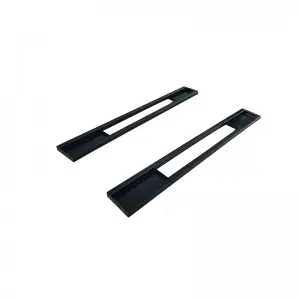Cylinders are fascinating geometric shapes that have captivated mathematicians, engineers, and artists alike for centuries. Defined as a three-dimensional solid with two parallel bases connected by a curved surface, a cylinder exemplifies both simplicity and complexity. This article delves into the geometry of cylinders, their various applications in engineering and technology, and their significance in daily life, offering a comprehensive understanding of this essential shape.
Understanding the Geometry of a Cylinder
A cylinder is characterized by its two main attributes: its radius and its height. The **radius** is the distance from the center of one base to its edge, while the **height** is the perpendicular distance between the bases. The formula for calculating the volume of a cylinder is given by:
\[ \text{Volume} (V) = \pi r^2 h \]
Where \( r \) is the radius and \( h \) is the height. The surface area, encompassing both the curved surface area and the area of the bases, can be calculated with:
\[ \text{Surface Area} (A) = 2\pi rh + 2\pi r^2 \]

Exploring the Fascinating World of Cylinders: Their Geometry, Applications, and Significance in Engineering and Everyday Life
This mathematical framework allows for a clear understanding of how cylinders interact with other shapes and how they can be utilized in various fields.
Applications of Cylinders in Engineering
Cylinders are integral to many engineering applications, primarily due to their efficient shape and structural advantages. One of their most prominent uses is in the construction of **pressure vessels**. For instance, storage tanks designed to hold gases or liquids are often cylindrical in shape. This is because the cylindrical form efficiently distributes internal pressure across its surfaces, minimizing the risk of failure or rupture.
Moreover, cylinders play a crucial role in **mechanical engineering**, particularly concerning pistons in engines. The piston-cylinder arrangement allows for efficient conversion of pressure into linear motion, making internal combustion engines and hydraulic systems function effectively. The seamless movement of pistons within cylinders also emphasizes the need for precision engineering, as even a minor deviation can lead to significant performance issues.
In the realm of **civil engineering**, cylindrical structures such as silos and columns are used in the construction of buildings and bridges. These shapes can withstand compressive forces well, making them ideal for supporting heavy loads. The combination of strength, stability, and aesthetic appeal ensures that cylinders are regularly utilized in large-scale constructions.

Exploring the Fascinating World of Cylinders: Their Geometry, Applications, and Significance in Engineering and Everyday Life
The Role of Cylinders in Technology
Beyond structural applications, cylinders are equally important in the field of technology. They are a fundamental component of **cylindrical batteries**, which power many of our everyday devices, from smartphones to electric vehicles. The cylindrical design allows for efficient energy storage and optimal heat dissipation, ensuring that these batteries provide reliable power.

Exploring the Fascinating World of Cylinders: Their Geometry, Applications, and Significance in Engineering and Everyday Life
Another notable technological application of cylinders is in **containers and packaging**. Many products are packaged in cylindrical containers due to their ability to minimize wasted space, both in storage and transportation. This design allows for easier stacking and handling during distribution, enhancing the efficiency of supply chains.
Everyday Life and Aesthetic Appeal
In addition to their functional applications, cylinders also hold a place in our daily lives from an aesthetic perspective. Consider objects such as drinking glasses, paper towel holders, and candles—all of which are cylindrical in design. The clean lines and simple form of these items make them visually appealing while also ensuring practicality.
Art and design have also explored the notion of the cylinder in various forms. Sculptors and architects often use cylindrical shapes to create works that are both structurally sound and visually engaging. Buildings with cylindrical elements can evoke a sense of movement and fluidity, demonstrating the versatility of this geometric form.
Conclusion
In essence, the cylinder is a geometric shape that transcends mere mathematics. Its applications in engineering, technology, and everyday life showcase its significance and versatility. Whether utilized to build robust structures, store energy, or enhance aesthetic designs, cylinders remain an enduring symbol of efficiency and elegance. Understanding their properties and functions allows us to appreciate their presence in our daily environments and highlights the intricate relationship between geometry and the world around us.Inground lift




